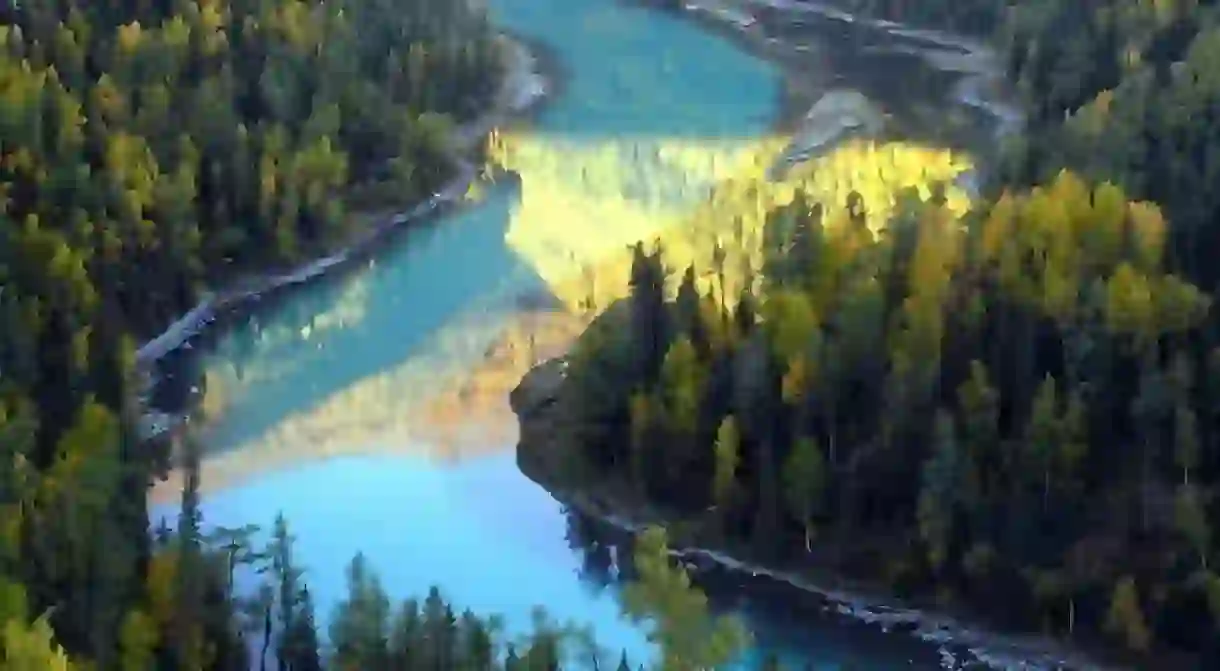Spotlight on a Chinese Province: Xinjiang

Xinjiang, China’s northwestern-most autonomous region, is unlike anything else in the country. Due to its rich Uighur culture and Turkic history, the province shares more similarities with the Central Asia than with the rest of China. Since its induction into the Middle Kingdom, Xinjiang has been promoted by the Chinese government as a hotspot for Han Chinese migration, putting the current ethnic makeup at nearly half and half Uighur and Han Chinese. The big cities are quickly losing the markers of their heritage, but the border regions and elsewhere still abound with Uighur, Mongol, Kazakh, Kyrgiz, and other minority cultures.
Tensions between the Han and Uighurs have come to a head several times in the past few years, and while the government has put extra security measures in place, it is still best to stick to the beaten path for your safety. Of course, the beaten path is expansive and full of more than one overview can contain. From natural beauty to religious iconography, Xinjiang is abounding with everything an intrepid traveler could hope for.
Major Cities
Urumqi
Urumqi, also spelled Wulumuqi, is the provincial capital of Xinjiang. Once a major hub on the Silk Road, Urumqi has become a hotpot of cultures. It is the easiest entry point for the province and the perfect jumping off point for all that Xinjiang has to offer. Within the city, top sites include the Xinjiang International Grand Bazaar, a traditional Islamic market and the largest of its kind in China; Hongshan, or Red Mountain, which overlooks the city and whose pinnacle is marked with a Buddhist temple; and Urumqi Tatar Mosque, which welcomes female visitors as well as male. Around the city, one can find Shuimogou Hot Springs and Glacier No. 1, the origin of the Urumqi River.

Kashgar
Kashgar is one of the westernmost cities in China and borders Afghanistan, Pakistan, Kyrgyzstan, and Tajikistan. While much of the city has been modernized according to Chinese standards, there remains a vibrant old town with well-preserved traditional mud houses. Other top sights in the city include the Id Kah Mosque, pictured below, the Sunday livestock market, and several historically significant tombs. The city is also a jumping off point for excursions to nearby K2, the world’s second tallest mountain, located on the border between China and Pakistan.

Turpan
Turpan is a major city in the east of Xinjiang and part of the Turpan Depression, the second lowest point on Earth, following the Dead Sea. As such, the city and surrounding areas are extremely hot and dry. However, the Uighur locals invented an irrigation system that keeps the city livable. While there is little to do in the city proper, there are several points of interest nearby, such as Flaming Mountain, which was made famous by the Chinese classic novel Journey to the West.

Other Travel Destinations
Ili Kazakh Autonomous Prefecture
The Ili Kazakh Autonomous Prefecture is a 280,000 square kilometer prefecture in northern Xinjiang that contains some of the most impressive natural wonders of the province. The Nalati Grasslands, worthy of a one to two2 day excursion, offer a peek into nomadic Mongolian life, and crescent-moon-shaped Kanas Lake, located in the Altai Mountains, is famed for its turquoise waters and mythical Kanas Lake Monster.

Sayram Lake
Located in a remote part of Xinjiang near Kazakhstan, Sayram Lake is a wonderful place to experience border culture. Stay with locals and experience sheep herding with the pros.

Karakul Lake
Located only 200 kilometers from Kashgar, Karakul Lake is one of the easiest lakes to visit in Xinjiang and is extremely popular with tourists. For around only RMB100, Kyrgiz locals will offer you the chance to take a three-hour camel or horse ride around the lake.

Tianshan Tianchi National Park
This popular national park, located only a two-hour bus ride from Urumqi, encompasses Tianchi Lake and the Tianshan Mountains, both of which are named for Heaven, and fittingly so. Some say the area is the most beautiful in all of Xinjiang, and that’s not just due to its accessibility. The national park features waterfalls, snow-capped mountains, fresh mountain springs, and an all-in-all refreshing break from the city.

Cuisine
Due to the predominantly Muslim Uighur population, Xinjiang cuisine is halal. Many dishes are made with mutton, beef, and camel, and taste like a delicious hybrid of Chinese and Turkish food. Flatbreads are also common in the cuisine, and travelers will have no trouble finding them freshly prepared by street vendors in the cities. Another highlight is lamian, or hand-pulled noodles in broth. While the ingredients themselves are top quality to satisfy halal requirements, dishes are often spiced with cumin, red pepper flakes, salt, and pepper. Those who have visited Xinjiang come away raving about the food, and it has become so popular throughout the whole of China that authentic Xinjiang restaurants are now found on nearly every city block.














